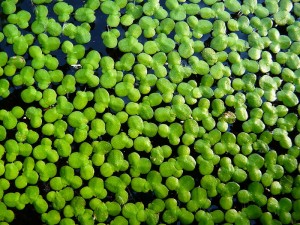
Used courtesy of Wikimedia Commons
The North Carolina Museum of Natural Sciences and North Carolina State University are looking at the fast-growing aquatic plant duckweed as a bioremediation agent. Often considered a nuisance plant, some species can double every 36 hours. However, it is the plants’ fast-growing nature that makes them so effective at taking up certain pollutants, particularly nitrogen, which gives them potential in stormwater ponds and certain wastewater lagoons.
The museum currently is doing studies with the plants in small test ponds, applying high levels of nitrogen and ammonia. Researchers are using aquarium test kits to monitor the resulting nutrient levels, which they say offers a good indicator because fish are highly sensitive to ammonium. It usually takes the duckweed three to four weeks to use up all of the ammonia, nitrite, and nitrate. As reported in Biomass Magazine, duckweed bioaccumulates about 99% of the nutrients contained in wastewater.
In some cases the plants also have been shown to remove other pollutants, such as lead and arsenates. However, in order to realize pollutant reductions, the duckweed must be harvested and removed. The biomass is rich in starch, so it has other potential applications, including as a source of biofuels. According to North Carolina State University researchers, duckweed grown in swine wastewater can produce five to six times more starch per acre than corn.





